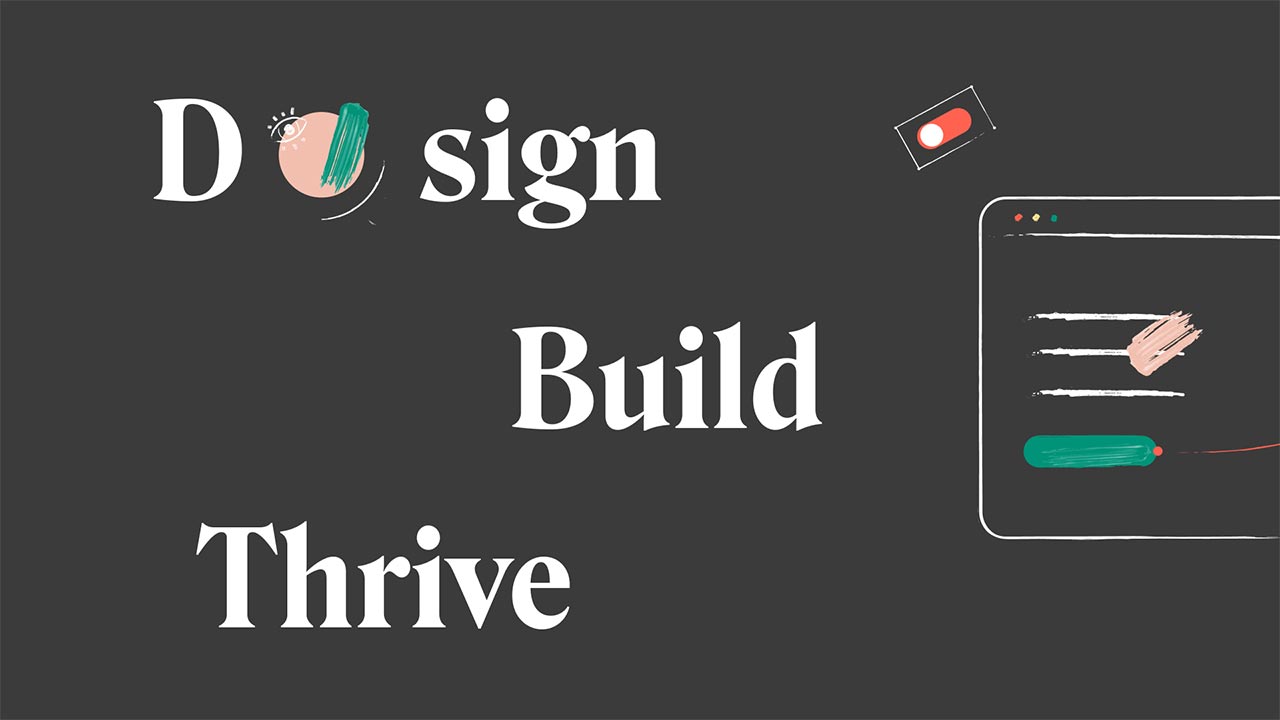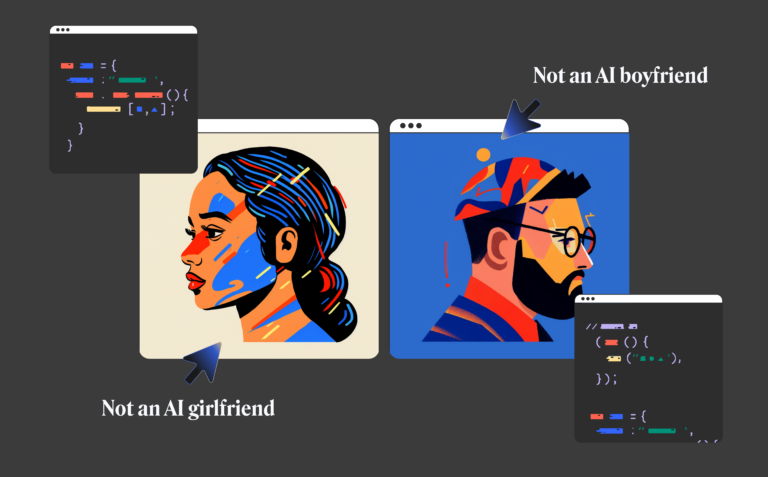“The transition from designer to developer should be automatic”8 min read
Reading Time: 6 minutesMichal Cohen, co-founder, CPO and design leader of Anima, simplifies the transition from designers to developers. “We wanted to make the process of creating digital products easier, with an emphasis on user experience.
״The transition from designer to developer should be automatic, something there was not working well”.
Five years ago, at the age of 30, Michal Cohen began a certification course in visual communication at Shenkar College of Practical Engineers, Israel. This was after a bachelor’s degree in Management and Economics at Ben-Gurion University. She specialized in finance, with three and a half years at Bank Leumi under her belt. “I liked the job and liked the capital market, but I did not like the style of work,” she says.
“I always knew I would be self-employed, that I would have something of my own, and the study of visual communication made me realize what I wanted. I could not afford to do a four-year degree, I did not quite know what this field means, but I realized that even when I studied business administration I had creative and different solutions from other people. I felt I had found my place”.
While studying, she began working on Anima with her husband, Avishay, and another partner. The meaning of anima is to animate, to give life, in Cohen’s context the desire was to give life to the design, to the code, and to the product. “We wanted to make the process of creating digital products easier, with an emphasis on user experience. The transition from designer to developer should be automatic, something there was not working well”.
What do you mean?
“There is frustration from both sides – from the designers on one hand, every point in their design has meaning, every element has been taken into consideration, and when it comes to development a lot of things fall by the wayside. On the part of the developer on the other hand – there is a lot of grunt work that is accompanied by unnecessary mistakes, and this process can be terribly frustrating for both parties, and require concessions and compromises due to lack of time. We wanted the programmer not to have to deal with moving pixels but only what was important behind the interface”.

Anima helps product teams deliver the best version of their vision
I’ve heard designers say “the programmer told me to send it in Anima”
Anima’s system offers a complete “design-to-development” platform, which allows designers and developers to share a common work environment and one language. Contrary to the accepted form of work, when designers finish their work and handoff the design to the development team, where the developers have to translate the design into a live code and product from scratch.
With Anima, product designers can continue to work on the tools they are used to such as Adobe XD, Sketch, and Figma, and at the end of the design process, export the design to the Anima platform, turning it into a code-based prototype that also includes animations, dynamic files, and project assets.
This allows the designer to fulfill his design vision in full, without losing components or functionality in the translation between design and development.
On the developer’s side, the option to automatically translate the design into developer-friendly code saves most of the grunt work and dramatically shortens development time, allowing the developer to invest in the architecture and precise tuning of the interface.
Anima is currently used by 300,000 designers (mostly in the United States), developers, and product managers, from companies such as Google, Amazon, Walmart, Facebook, Verizon, Salesforce, and Starbucks. Every week, the Anima community converts more than 4,000 designs into code.
“Large portion of our users are designers: the goal is first and foremost to give value to the designer, even to the individual designer within the organization. We want to grow from the bottom up, from the design team to the development team. I’ve heard designers say “the programmer told me to send it in Anima”.
Anima's design language
How did you start the work?
“We built our own studio, made a first version but the difficulty was that users had to learn a new tool. From our conversations, we realized that the feature we were most excited about was the responsive layout. We released a plugin for the Sketch software and it had a really hysterical buzz, suddenly YouTube uploaded videos of how to use it, everything was organic. Back then, Sketch dominated the market, most of the development teams worked with them, there was our target audience. Today, it is already available for all the design tools”.
“Slowly we began to improve the product, we no longer had to force users to learn something from scratch. We could let them work with the tools they are used to working with, and pass the design onto the developer with a tool they are used to. Making sure that the whole process is done with as few complications as possible along the way”.
In 2018, Anima was accepted to an accelerator in Silicon Valley, Y Combinator. “We moved there for 6 months, made connections, met companies that were potential customers, and started looking for the niche we wanted to get into. So the idea came up for the first time to produce a code-based product”.
“At the end of last year, we released our latest big version, the novelty of which is that the developer can select one element in the design and automatically get his code. You no longer receive a complete code for the entire site”.

Anima: empowering product teams by turning their designs into React, HTML, & CSS code
What can be automated, should be automated
Up until a year ago, Cohen was the only designer in Anima, and in the past year, she recruited three more designers to the team. “We try to create a discourse that dominates the whole of society, that there will be a match at the design and artistic level. We talk to designers, our users, develop new features, do a lot of A/B testing on every feature, and always measure everything”.
How do they get to you?
“A lot of them come through the new plugins, and they meet a product loaded with features. We see how many have downloaded and activated, and on the other hand many are downloading the plugins and have no idea what to do next, how to proceed. Our focus now is to improve the user experience and increase the value we give to designers.
“You keep coming up with ideas for improvement, drawing conclusions, and seeing the impact it makes. You do something small and see that you have an X amount of more downloads, or more users paying. It’s our whole life, all day long: and the most amazing part is that you take an idea, and in a very short amount of time it reaches our hundreds of thousands of users. You can really make an impact”.
“It’s constant learning: learning the right methodologies every day, and then suddenly we’re a team of 20 people. You say to yourself, wait a minute, let’s do it right, let’s understand how to create the right product workflow until it reaches down to design and development. We are improving all the time, once you live the product it comes to you naturally. It’s crazy that it’s been only four years, it feels like my whole life”.
Is it not tiring?
No. I keep things for retirement; for example, I’m dying to do an illustration course… 2020 was supposed to be a crazy year, I gave birth in April, and it really was a crazy year but from the other perspectives, I wouldn’t change anything. We really appreciate the point where we are today, it’s not taken for granted”.
What next?
“We would like to be the obvious choice used in every product team, in every transition between design and development team. This is a very hot field, the amount of funds facing us is very large. It was to invent from scratch something that did not exist: it’s not that you have an idea, there are similar products, and you see how others have solved the problem”.
How do you explain that?
“While the design tools are very advanced when it comes to user experience, everything related to how to write code is like 30 years back; Nothing has changed.
“It cannot be that the attitude has not changed, it is simply a problem that is very difficult to solve”
We believe that what can be automated should be automated. It cannot be that the attitude has not changed, it is simply a problem that is very difficult to solve. We are not the first to think about it, we just do it differently. Our advantage is that we are not changing work habits”.
Do you think your track plays a part in it?
“Maybe in retrospect I would have taken a different route, but I’m not sorry, it gave me a business mindset at the entrepreneurial level, with all the risks of setting something up from scratch. From understanding economics and business and researching myself, what pushes me in the end, to get to the design, all the way to the product, it connected me to the whole puzzle. At the end, I got to where I needed to be”.


 Figma
Figma Adobe XD
Adobe XD Blog
Blog



